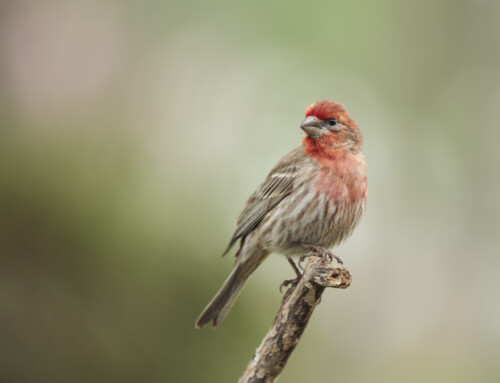 LINKED PAPER
LINKED PAPER
Birds and people: from conflict to coexistence. McMahon, B.J., Arroyo, B., Bunnefeld, N., Carrete, M., Daunt, F. & Young, J.C. 2023 Ibis. doi: 10.1111/ibi.13260 VIEW
Why is there increased negative interactions between humans and animals?
Due to the shrinking of wild habitats and growing human population, there are more human-wildlife interfaces that can in turn lead to conflicts between people around conservation (Redpath et al. 2013). These conflicts are wide and varied across the globe with disagreements arising over a range of different species, ecosystems and contexts. To date, the focus of much human-wildlife related research has been on mammals. There is no doubt that birds are also a source of conflicts with humans, although it is not evident in the ornithology literature. However, if you scratch beneath the surface you’ll see that many of the resource management conflicts involve bird species. This is due to the fact that resource management is a multi-stakeholder issue with conflicts related to agriculture, forestry, fishing, hunting and even public health interests and various cohorts of society value birds differently leading to disagreement in relation to the conservation of species.
Why Birds and People?
As these conflicts are often more complex than one might initially think, involving ecology, economics, cultural, social and political dimensions, the British Ornithologists’ Union organised a conference in November 2021 that aimed to highlight and explore conflicts involving birds and their conservation. The conference covered a wide variety of conflicts through various sessions such as agriculture , hunting, invasive species and seabirds. The published review paper aimed to produce a summary of reflections from the conference which further synthesised in this piece. This started by looking at key themes around understanding conflicts and the importance of the diversity of perceptions of conflict with the importance of multidisciplinary and transdisciplinary approaches to understand conflicts.
While understanding is an important first step, the management of conflicts related to birds is pertinent to avian conservation. Approaches to the management include technical solutions, collaboration, and building trust. Technical solutions involving bird conflicts are variable in application due to species, region and human contexts. An example of a technical solution involves the diversionary feeding of Hen Harrier (Circus cyaneus) to reduce predation on Red Grouse (Lagopus lagopus scoticus) chicks thus maintaining grouse numbers at a level where driven shooting is possible (Redpath et al. 2001). Another example of a technical solution involves the use of data from the International Cooperation for Animal Research Using Space systems on board the International Space Station to provide information on hotspots of potential interaction between humans and gulls. In relation to collaboration and building trust an example involved bringing together scientists and other knowledge holders interested in breeding ground-nesting birds in Scotland (Aimsworth et al. 2020). Building dialogue and trust enabled stakeholders to reach consensus on species trends and status which was to inform the wider conflict aim. In addition, the early involvement of the stakeholders helped understand the conflicts and helped identify solutions .

Figure 1 A flock of gulls © John Haslam CC BY 2.0 Wikimedia Commons.
Looking into the future
There is likely to be increased challenges, including conflicts, relating to birds in the future due to the increasing human activities. In addition, the nature of these conflicts is likely to be complex as they are embedded in other challenges including land-use, food and energy security, climate change, water security, global biodiversity loss and infectious disease management. The scope for dealing with these challenges may also depend on the flexibility or otherwise of legislation, policy and international agreements e.g. the Common Agricultural Policy. However, there are a range of different tools available to aid with solutions including improved dialogue, trust-building between stakeholders, bird population modelling and stakeholder modelling.
Conflicts with birds are ever present as discussed in the British Ornithologists’ Union in November 2021. From our perspective, as ornithologists and bird conservationists, we need to understand existing conflicts and pre-empt potential future conflicts. There is a need to empower ornithologists and bird conservationists by engaging with a range of disciplines to facilitate engagement with the relevant stakeholders for effective conflict management into the future.
References
Ainsworth, G.B., Redpath, S.M., Wernham, C.V., Wilson,M.W. & Young, J.C. 2020. Integrating scientific and local ecological knowledge to address conservation conflicts: towards a practical framework based on lessons learned from a Scottish case study. Environmental Science & Policy 107:46-55. VIEW
Redpath, S.M., Thirgood, S.J. & Leckie, F. 2001. Does supplementary feeding reduce predation of red grouse by hen harriers? Journal of Applied Ecology 38:1157-1168. VIEW
Redpath, S., Young, J., Evely, A., Adams, W.M., Sutherland, W.J., Whitehouse, A., Amar, A., Lambert, R., Linnell, J.D.C., Watt, A.D. & Gutierrez, R.J. 2013. Understanding and managing conflicts in biodiversity conservation. Trends in Ecology & Evolution 28:100-109. VIEW
Image credit
Top right: Bird spikes © Todd Baker CC BY 2.0 Flickr.
If you want to write about your research in #theBOUblog, then please see here.



